Hairless dogs are truly unique among our canine companions. Their lack of fur isn’t just a random trait it comes from specific genetic factors that cause hairlessness or hair loss. There are two main types of genetic hairlessness: one caused by a dominant gene and the other by a recessive gene.
This genetic difference gives rise to some of the most distinctive and fascinating dog breeds in the world. In this guide from Nexus-pets we’ll explore these extraordinary hairless dogs and discover what makes them so special.
What Defines a Hairless Dog Breed?
A hairless dog breed is characterized primarily by its unique genetic makeup that results in little to no fur on its body. Hairlessness in dogs stems from specific genetic mutations, most notably a dominant gene linked to the FOXI3 gene, which causes ectodermal dysplasia a condition affecting hair and skin development. Dogs carrying this dominant gene typically have one copy paired with a recessive gene because inheriting two dominant copies is lethal before birth. This genetic pattern means that hairless dogs can produce both hairless and coated puppies, depending on the gene combinations of their parents.
Unlike low-shedding or hypoallergenic breeds that retain fur but shed minimally, true hairless dogs have very sparse or no fur, making their skin directly exposed to the environment. This exposure brings particular care needs: their skin requires regular cleansing, moisturizing, and protection against sunburn and cold weather, as they are especially sensitive to temperature changes. Many hairless breeds also have coated varieties within the same breed due to genetic variation, which are recognized in dog shows and registries.
Popular hairless breeds include the Mexican Hairless (Xoloitzcuintli), the Chinese Crested Dog (with both hairless and “Powderpuff” coated types), and the Peruvian Inca Orchid. Other lesser-known breeds like the Argentine Pila and Hairless Khala also exhibit this hairless trait, though some are not officially registered.
Top Hairless Dog Breeds Around the World
1. Chinese Crested
The Chinese Crested is an ancient breed with a somewhat mysterious past. Despite its name, this breed likely did not originate in China; genetic studies suggest links to similar hairless dogs from other regions, including Mexico. Historically, the Chinese Crested has been prized for its unique appearance and lively nature, making it a beloved companion across the globe.
This breed comes in two distinct varieties: the Hairless, which displays bare skin except for tufts of silky hair on the head, paws, and tail tip, and the Powderpuff, which boasts a full, soft double coat covering the entire body. Their slender build, large expressive eyes, and erect ears contribute to their charming and elegant look.
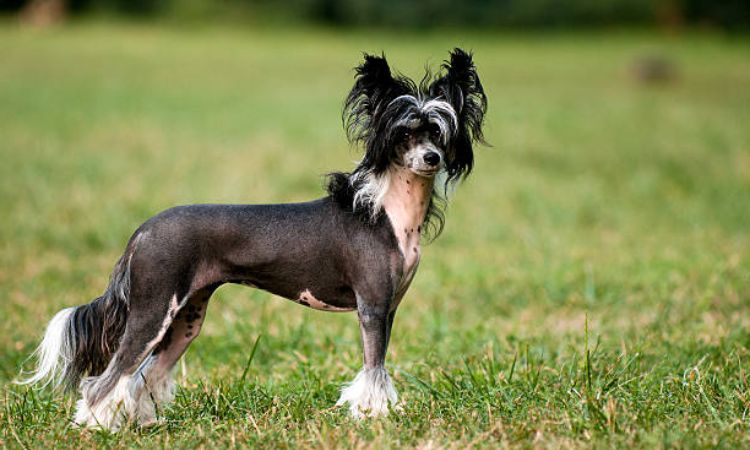
Chinese Cresteds are known for their affectionate and playful demeanor. They form strong bonds with their owners, enjoy social interactions, and often exhibit a cat-like curiosity. These dogs thrive in environments where they receive plenty of attention and mental stimulation.
Though low in shedding, the Hairless variety requires regular skin maintenance, including gentle baths to prevent dryness or irritation. Applying a veterinarian-approved moisturizer helps maintain healthy skin. Additionally, sun protection through dog-safe sunscreen or clothing is essential to avoid sunburn, and extra warmth during colder months is necessary due to their minimal fur.
2. Xoloitzcuintli (Mexican Hairless Dog)
The Xoloitzcuintli, often called “Xolo,” is among the oldest known dog breeds, with roots tracing back over 3,000 years to ancient Aztec and Mayan civilizations. Revered as a spiritual and protective companion, the breed holds national importance in Mexico and continues to be celebrated for its cultural heritage.
Xolos are unique in offering three size categories: Toy (10–14 inches), Miniature (14–18 inches), and Standard (18–23 inches). Weight ranges accordingly, making this breed versatile for different living situations, from apartments to spacious homes.
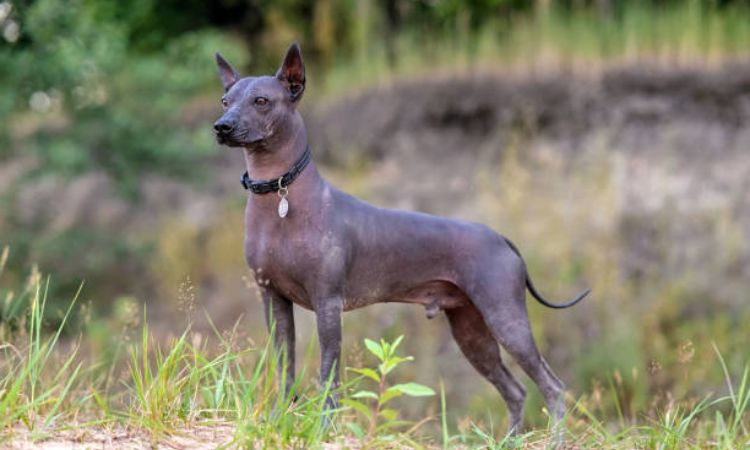
Known for their intelligence and alertness, Xolos are protective but typically calm and gentle with family members. They exhibit a strong bond with their owners and can be wary of strangers, making early socialization crucial. Their watchdog tendencies do not usually translate into aggression but rather a watchful loyalty.
Though their hairless skin reduces shedding, it increases vulnerability to sun damage and cold temperatures. Regular bathing with mild shampoo and application of moisturizers help maintain skin health. Clothing or sunscreen is advised for outdoor protection, and warmth must be provided during cooler weather.
3. Peruvian Inca Orchid
Hailing from Peru, the Peruvian Inca Orchid is deeply embedded in the country’s history and culture. This breed has been cherished for centuries as a loyal companion and symbol of nobility. Recognized as Peru’s national dog, it reflects a rich heritage and tradition.
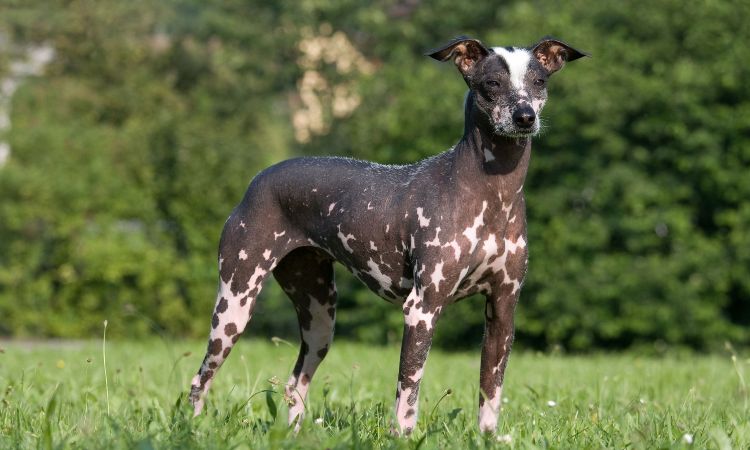
Most Peruvian Inca Orchids are hairless, featuring smooth skin that ranges in colors from black and brown to pink and white. A rare coated variety exists with a short, fine fur covering. They come in three sizes—small, medium, and large—making them adaptable to various households.
These dogs are known for their affectionate and protective nature. Intelligent and alert, they bond deeply with their families and can be reserved with strangers. Peruvian Inca Orchids are also active and athletic, requiring regular exercise to stay healthy and content.
Due to their exposed skin, Peruvian Inca Orchids need consistent care to avoid dryness, irritation, or sunburn. Gentle bathing, moisturizing, and protective measures such as sunscreen or clothing are vital. Regular veterinary check-ups help monitor any skin conditions and overall wellness.
4. American Hairless Terrier
The American Hairless Terrier is a relatively modern breed, emerging in the 1970s from Rat Terrier lineages in the United States. Bred selectively for their hairless trait, these dogs have quickly gained popularity due to their friendly disposition and manageable grooming needs.
This breed is compact, typically standing between 12 and 16 inches tall and weighing 12 to 16 pounds. Their skin can be completely hairless or bear a fine short coat, with color variations including black, chocolate, red, and apricot.
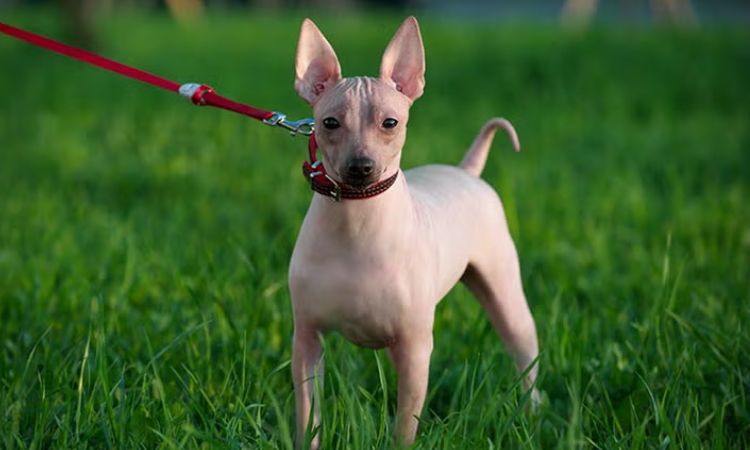
Highly intelligent, energetic, and playful, American Hairless Terriers make excellent companions for active families. Their strong prey drive means they thrive in homes with secure yards and plenty of mental engagement. They are affectionate, loyal, and usually get along well with children and other pets.
Despite the absence of a traditional coat, these dogs still need regular skin care, including baths with gentle cleansers and moisturization. Sun protection and warmth during cold weather are essential. Routine exercise and mental stimulation help maintain their happiness and health.
5. Argentine Hairless Dog
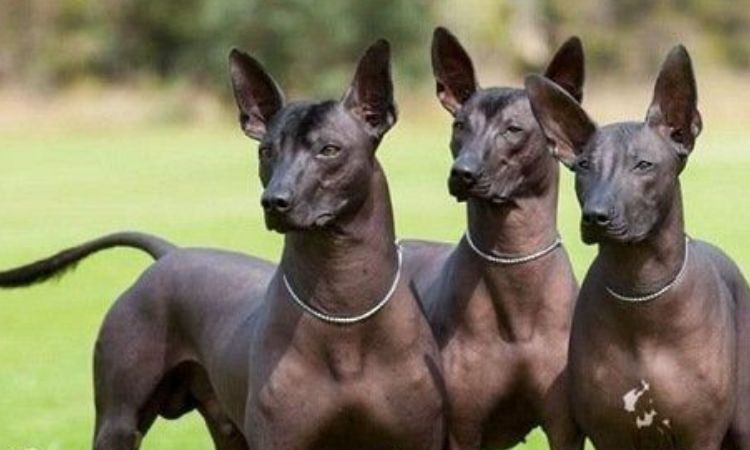
The Argentine Hairless Dog, or Pila, is a rare South American breed primarily found in Argentina. Though less globally known, it shares ancestry with other regional hairless dogs and is valued for its distinctive appearance and gentle temperament.
Argentine Pilas are generally hairless, though some may have small tufts of fur on the head or tail. They come in three size categories, ranging from small to large, and their skin color often features unique spotted or piebald patterns.
These dogs tend to be loyal and alert, forming strong bonds with their owners. While they may be sensitive and reserved around strangers, Argentine Pilas are affectionate and adaptable family companions.
Maintaining the health of their exposed skin is paramount. Regular bathing and moisturizing routines, alongside sun protection, help prevent dryness and skin problems. Like most hairless breeds, Argentine Pilas benefit from warmth during colder seasons and moderate daily exercise to stay fit and content.
Benefits of Owning a Hairless Dog
- Hypoallergenic Qualities: Hairless dogs produce fewer allergens since they don’t shed fur, making them a better option for many allergy sufferers. However, they are not completely hypoallergenic because allergens can still come from their skin oils and saliva.
- Reduced Shedding and Cleanliness: Without fur, hairless dogs shed very little or not at all, helping keep homes cleaner and reducing pet hair on furniture and clothing. They still require regular skin care like baths and moisturizers to stay healthy.
- Unique Appearance and Companionship: Hairless dogs have a striking, uncommon look that many find appealing. They are typically affectionate and loyal, often seeking close contact with their owners, making them loving and devoted companions.
Challenges of Owning a Hairless Dog
Skin Care and Sensitivity
Hairless dogs have exposed skin that is prone to sunburn, dryness, and irritation. Applying dog-safe sunscreen before outdoor activities is essential to prevent sun damage. Their skin also requires regular moisturizing with appropriate lotions to stay healthy and avoid cracking. Frequent baths using gentle shampoos help maintain skin cleanliness and prevent infections like acne.
Temperature Regulation and Clothing Needs
Without fur, hairless dogs are sensitive to temperature changes. They get cold easily and need sweaters or coats during chilly weather to stay warm. Conversely, they can overheat in hot weather, so protection from direct sun and access to shade and water is necessary.
Potential Health Issues
Hairless breeds may face skin infections and genetic conditions like ectodermal dysplasia, which affects skin and teeth. Dental problems are common due to their genetics. Regular veterinary care is important to monitor and manage these risks.
With their striking appearance and diverse personalities, hairless dog breeds are truly in a class of their own. They prove that you don’t need a coat of fur to be a loyal, loving, and captivating companion. Whether you’re drawn to the playful Chinese Crested or the majestic Xoloitzcuintli, these unique canines offer a special kind of companionship that’s sure to enrich your life.






